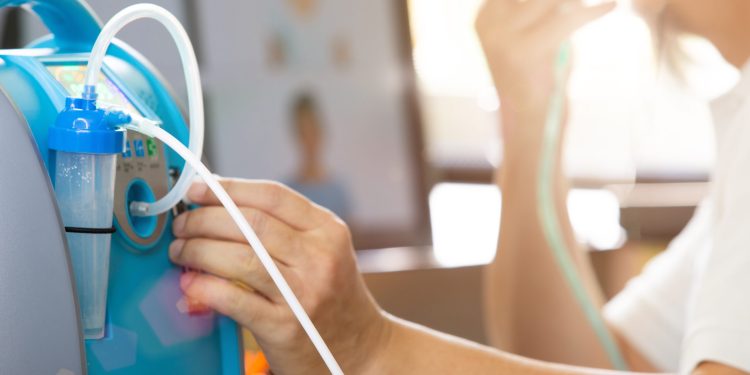Portable oxygen concentrators have become an invaluable aid to those requiring supplemental oxygen. As lightweight and mobile devices, portable concentrators allow freedom of movement while providing vital oxygen when and where needed. This guide covers everything you need to know about using portable oxygen concentrators for home oxygen therapy.
Table of Contents
How Do Portable Oxygen Concentrators Work?
Portable oxygen concentrators are small battery-powered machines that concentrate oxygen from room air. They work by filtering out other gases like nitrogen using pressure swing adsorption. Oxygen molecules are trapped while other molecules pass through special filters. Clean, concentrated oxygen is then delivered to you through a nasal cannula.
The oxygen level delivered, measured in mL/min, is adjustable based on your doctor’s oxygen prescription. Many portable concentrators can reach up to a 3 LPM continuous flow rate, which is suitable for most users’ needs. Pulse flow settings that conserve oxygen during exhalation may also be available.
Benefits of Portable Concentrators
There are many advantages to using a portable oxygen concentrator at home:
Freedom and Flexibility
Portable concentrators allow you to move around freely while using your oxygen device. Concentrators do not keep you tied to an oxygen tank or lengthy tubing. This mobility makes travel away from home much simpler as well.
Peace of Mind
An easily mobile oxygen device provides security in emergencies or power outages where access to oxygen tanks may be limited. Portable units can quickly be brought with you without difficult transportation.
Lower Cost Over Time
While more expensive upfront than oxygen tanks, portable oxygen concentrators eliminate the need for costly deliveries and refills of oxygen tanks over months and years. Less waste is generated as well.
Easier Use
Concentrators eliminate tricky oxygen tank refills and deliver oxygen at the touch of a button without worrying about low levels. Maintenance involves only cleaning filters and replacing them occasionally.
What to Look for in a Home Oxygen Concentrator
If considering a portable oxygen concentrator for home use, keep these key features in mind:
Adequate Oxygen Output
Your doctor will determine the flow settings needed for your condition. Look for either continuous or pulse flow settings that can meet prescription levels.
Battery Runtime
Longer battery life will increase the time you can be mobile without charging. Average runtimes are 2-5 hours for portable models. Extra batteries can prolong time further.
Added Convenience Features
Look for valuable extras like carrying cases, dual battery charging, oxygen output indicators showing flow settings, and outlets to power CPAP machines.
Prescription Coverage
Many insurance providers and Medicare will cover some costs if medically required. Ensure you check what’s covered under your plan. Rental programs may also be available.
Warranties
Compare warranties between devices for coverage length, repair policy, costs, and customer service assistance. Warranties typically last 3-5 years.
Maintaining Your Portable Concentrator
Caring correctly for your portable oxygen device ensures it works reliably for many years:
- Clean filters weekly as directed to avoid blocked air intake. Replace filters when worn.
- Use approved batteries and power adapters to prevent damage.
- Transport in the provided carrying case to avoid impacts.
- Avoid getting moisture or liquids inside the device to prevent electrical hazards and corrosion.
- Follow prescribed service schedules for maintenance checks by professionals.
Using and maintaining a portable oxygen concentrator keeps you mobile and gives you peace of mind through reliable access to supplemental oxygen when required. Discuss options with your doctor to find the right solution for home oxygen therapy.
Conclusion:
Portable oxygen concentrators like the Eclipse 5 have been life-changing devices for those requiring home oxygen therapy. Their ability to produce oxygen from room air safely and reliably while remaining easily mobile provides critical independence. Concentrators eliminate the hassle and limitations of oxygen tanks. For many, they have become the preferred long-term home solution for supplemental oxygen needs. Weighing the enhanced quality of life and convenience factors, a portable device is worth considering if your doctor prescribes home oxygen treatment. Consult with your medical provider to determine if a prescription for a portable oxygen concentrator would benefit your health and mobility based on your specific condition and oxygen needs. With suitable devices and proper care, portable oxygen concentrators can empower you and give you peace of mind.


 Home
Home










